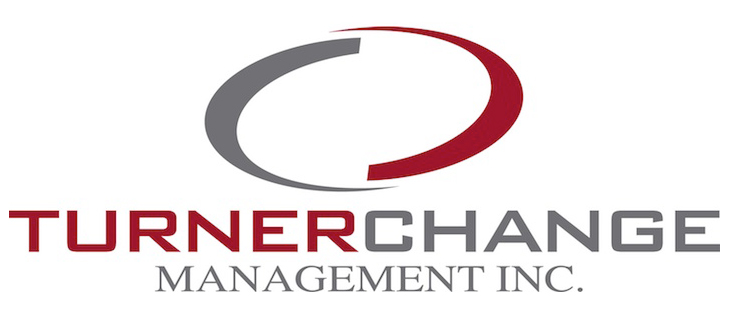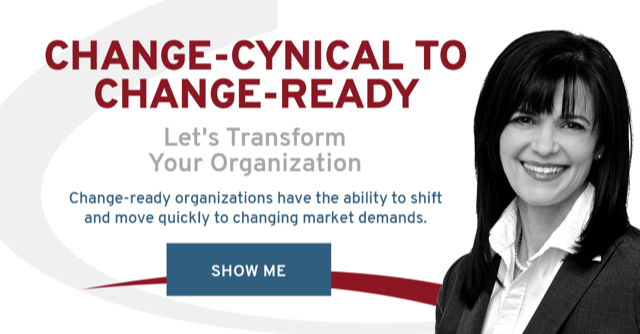Recently I had a conversation about the use of sports analogies and language in business. It was surprising how much the language of business is grounded in the language of sport. I frequently use a sports metaphor to describe a concept, despite not being a sports enthusiast.
I understand why we like the analogy. When we think of a sport, we usually think about focus, teamwork, discipline, motivation, coaching, and training. All of these are also needed to enable your business and healthy and sustainable organizational change.
As I thought about the use of the language of sports, especially during organizational change, I could see the advantages. But I could also see where aligning too closely posed some potential pitfalls for your change efforts.
Change is not about Winning or Losing; It’s About Growth and Responsiveness
When it comes to a transformation most of us can relate to the underdog team that transforms itself and wins the championship. Like when The Toronto Raptors basketball team surprised everyone and they went from being the underdogs to claiming the 2019 NBA championship.
There is only one goal in sports—to win. Everyone has their energy focused on beating the competition and taking home the prize. However, applying this same win versus lose focus, pushing through people’s resistance as if it was the competition, will cause more harm than good to your change efforts.
Your organizational change efforts should not be about winners and losers. Healthy and sustainable organizational change should be about growth, adding value, staying relevant, and responding instead of reacting to a dynamic environment. Each change you enable should make your organization and employees healthier and capable of handling and responding to subsequent changes.
Although a single focus on winning is not the right strategy for approaching change, having a clear, concrete, and concise outcome story is necessary. Leaders who work with their team to define their outcome story, then focus on building readiness instead of managing resistance can use change to create value and long-term success, well past any single change initiative.
Organizational Change Takes Time
My daughter prefers watching sports with her fiancée at home. Mainly because she can fast forward to the end, she is not a fan of what she calls “sportsball.” A word she claims to have gotten from Kelly Clarkson. For her seeing the end score is basically like watching the game. Her fiancée disagrees. To him, sitting through the whole game is the point.
The same thing can happen with organizational change. You think the change is taking too long or you believe people are resistant to change. You want to fast forward to the end. As a result, you might push harder for people to act before they are ready, expect more, lose patience, label people resistant to change, add new people, and bench others. You try to speed the process up.
But instead of helping, the additional pressure only worsens the situation, and further slows your change efforts. One reason the added stress doesn’t help is because of a phenomenon called time compression diseconomies. Frank Vermeulen states time compression diseconomies occur when organizations try to compress lots of effort and growth into a short time. But exerting twice the effort or resources doesn’t mean you will get twice the benefits.
Change takes time. It often takes more time than most leaders think it should or want it to take.
Our movement through the change process is not linear, nor is the goal of your change initiative to see who gets their first. It’s a human process, and yes, there is a predictable pattern but moving through it is more like a dance. It takes time for people to let go and build the readiness needed to normalize the new activities and behaviours needed for long-term sustainability.
So, instead of pushing harder, you need to actively engage throughout the whole process, adjusting the time and aligning the pace with the readiness of the people adopting the new activities and behaviours.
Language Shapes the Way We Perceive and Interpret our World
Sports metaphors permeate all aspects of our language and frame many of the things we see. Like when I am launching a new initiative or giving a presentation and say, “Let’s hit this one out of the park.” Or you say to your colleague, who just did a fantastic job and wowed your best client, “That was a slam dunk.”
Many sports metaphors are so embedded into our language, especially in North America, that we may not even realize they are sports metaphors. For example, did you know that up to scratch comes from track and field or in pole position is from car racing?
 The language you use to talk about your change effort is critical to enabling healthy and sustainable change. Our language shapes the way we perceive and interpret our world. It can invite and include us and help build the commitment needed for people to take action.
The language you use to talk about your change effort is critical to enabling healthy and sustainable change. Our language shapes the way we perceive and interpret our world. It can invite and include us and help build the commitment needed for people to take action.
Although a sports analogy can easily create a picture, it can also exclude people. Not everyone may be familiar with the terminology, a sports fan, or have a positive experience in a particular sport. It’s helpful to check in: do people understand the reference? Does it create the picture you intended? Are they feeling left out because they don’t know the sport or aren’t a fan?
Build Knowledge and Skills to Enable Change Capability
One area where leaders can take a lesson from sports is the emphasis on practice and learning. Every coach of every sport ensures every player makes practice time as necessary as the game.
Nancy Katz, associate professor at Harvard Business School, notes in her research on liabilities and lessons of sports teams for workplace teams that one lesson managers can take from sport is to make time and space for learning deliberately. She notes that during a game, the team is in performance mode. At practice, they are in learning mode. And it’s in the practice mode where innovation, experimentation and testing of new ideas can occur.
When a team or a player is not doing well, coaches will often double down on the practice time. Take it back to basics, train more and with more focus to increase strengths and decrease weakness. Many business leaders do the opposite. As revenues and performance decrease, they cut people, suspend or eliminate leadership development budgets and training opportunities.
Enabling healthy and sustainable organizational change requires knowledgeable and skilled change leaders at every level of the organization. We are moving through a space of rapid and unprecedented change. Both planned and unplanned change.
Now is the time to ensure each level of your organization is confident and has the knowledge and skills to support your change efforts. Tapping in and ensuring you have people with the skills to navigate change saves time, saves money and increases performance.
Training alone won’t get you the results you need or change your behaviour. People also need the time and space to practice, learn and hone their skills.
But without asking the question – What skills do our leaders, managers, and employees need to navigate this situation? And do we have them? You are doomed to continue to get the same results.



